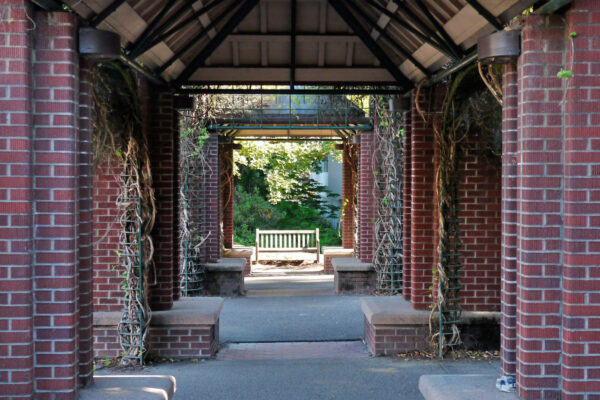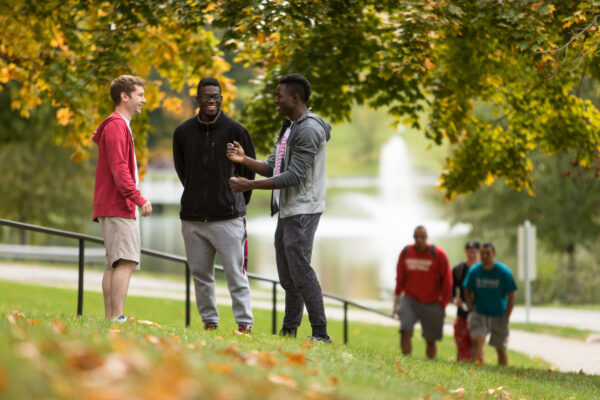By Michael A. Gealt and B.J. Reed
This post is the eighth in a series from the Association of Chief Academic Officers.
Academic deans are not a monolith but reflect differences in experience and professional norms. They also oversee colleges and schools with varied cultures and norms. Creating a team that can effectively work together is key to the success of the entire academic enterprise. As a chief academic officer (CAO) or provost, we must understand our organization as well as assess the status of our direct reports, develop a plan for their professional development, and then implement the plan.
Challenge: Not All Deans Are the Same
We need to know the differences, as well as similarities, that exist among our deans. The similarities are easy to identify and arise because almost all came from academic departments, went through the tenure/promotion processes, and are engaged in dissemination of scholarship. In our experience, challenges in leading a group of deans often are rooted in their differences, which stem from:
University organization. Some universities have a relatively simple structure for academic affairs with a CAO, one or two associate CAOs and three or four deans. Others have senior associate CAOs, assistant CAOs, vice presidents who report directly to the CAO, and at least 10 deans, including possibly a dean of medicine or dean of law.
Maximizing the team may be complex because of overlapping authorities, longevity in position and, possibly, geographical distance when there are multiple campuses. CAOs must understand the internal political impact that results from university organization. These understandings are important so personnel decisions regarding deans are made to enhance the academic team as well as intra- and inter-college function.
Some universities have multiple campuses and deans must manage instructional delivery across these locations. This can split the focus of the dean and require associate deans or department heads to manage across these varying sites. The CAO must help the dean focus on all instructional locations, especially around key issues such as shared governance, unionization or administrative leadership.
Disciplinary culture. Differences sometimes arise in disciplinary culture and norms, such as whether the dean has professional experience or comes from a program subject to disciplinary accreditation. A mathematician may not have assessment experience demanded by accreditation in engineering, business, or education, and yet will be expected to lead the college effort. Academic team members’ experiences with faculty unions, expectations for non-tenure track faculty in professional schools such as business or medicine, and historical experience with scholarship expectations can be a challenge when trying to get all members on the same page. Deans recruited from R-1 institutions may bring a fantastic skill set but may not appreciate the culture they find in the master’s comprehensive university or a private liberal arts institution.
Inherently unequal distribution of resources and expectations. The size of individual academic colleges and the programs contained within the unit can also make a difference. Arts & Sciences (A&S) Colleges usually are larger and have more diverse operational expectations depending on clusters of units (e.g. natural sciences, social sciences, humanities). Within the college will be departments generating large numbers of undergraduate credit hours, large numbers of research dollars, both or neither.
This challenge of unequal resource generation and of different cultures arises even if there are multiple colleges covering the entire A&S space (Central Michigan has Colleges of Science & Engineering, Liberal Arts & Social Sciences and Arts & Media). Indeed, this situation may be more challenging because departments with overlapping disciplinary areas become inter-college, instead of intra-college, disagreements. Colleges of Education and Business may have more shared cultures than more diverse academic units. At the University of Nebraska at Omaha (UNO), a faculty member in teacher education may view the world differently than one in Health and Kinesiology. Here again, different organizational structures impact the provost’s ability to create the team. Professional disciplines in public administration, criminal justice or medicine will operate very differently.
Solutions
So how do CAOs address these challenges in building a highly functional team? One way is to build an “academic project” with the CAO as the lead. At UNO, the focus has been on building a comprehensive strategic plan with four shared campus goals (student centeredness, academic excellence, community engagement, and institutional quality) along with common mission, vision and values with the colleges developing their own strategic plans that aligned with the campus plan. This allows a framework to reflect differences among the colleges while also creating a common set of strategic priorities for all to follow.
In some cases, the project is not a creation of the CAO but one that co-engages deans in leadership roles so that all academic leaders are working toward a common goal. CMU currently is undergoing an “envisioning” process with a 10+ year horizon, championed by the president with the CAO chairing the academic quality and environment committee. UNO is focused on “big ideas” to stretch traditional academic thinking. Because the committees are university committees, there are academic affairs members on all of them. The CAO must work not only within the committee he or she is leading, but also across committees. The goal of the CAO is to assure that all academic leaders work together and are going in the same direction. This may require monthly meetings, periodic retreats or strategic planning efforts, virtual sessions, one-on-one meetings, coaching and other efforts to engage deans individually and collectively.
Another approach is to adopt a project in which deans are the lead and maximize the team while “leading from behind.” One project that CMU developed was built around a common theme, the Interdisciplinary Center for Health and Wellness. The deans of colleges with different expertise and cultures (Liberal Arts and Social Sciences, Health Professions, Medicine, Arts and Media, and Education and Human Services) came together to meet a common regional community goal. The CAO support demonstrated that great ideas can arise and be empowered in many places within the academic leadership. UNO had deans work directly with enrollment management to develop target recruitment goals for each unit and each college.
Building trust and communication
The environment in which the CAO and deans build communication and trust is never static and requires constant attention and effort. At UNO, the deans met both collectively with the CAO but also individually each month. They also ensured that other direct reports (e.g. institutional research, student affairs, finance/budget, human resources, accreditation/assessment also interacted regularly with the deans. This reduced or eliminated “side deals” between the CAO’s office and individual deans. At CMU, the vice provosts sometimes met individually with deans instead of the provost in order to bring the vice provosts functionally into the academic team.
Finally, the key for CAO/provosts is to build trust through information sharing and participatory decision making. Unless there is a willingness to allow deans to have access to the information available to inform decisions, trust will wither. Trust requires sharing information, following through on what you commit to, seeking advice and council before actions are taken and explaining why a final decision has been made.
ACAO aims to enhance the effectiveness of CAOs by providing networking and professional development opportunities and engaging members in academic affairs issues that cut across the diversity of higher education institutions and missions.
aims to enhance the effectiveness of CAOs by providing networking and professional development opportunities and engaging members in academic affairs issues that cut across the diversity of higher education institutions and missions.
If you have any questions or comments about this blog post, please contact us.

